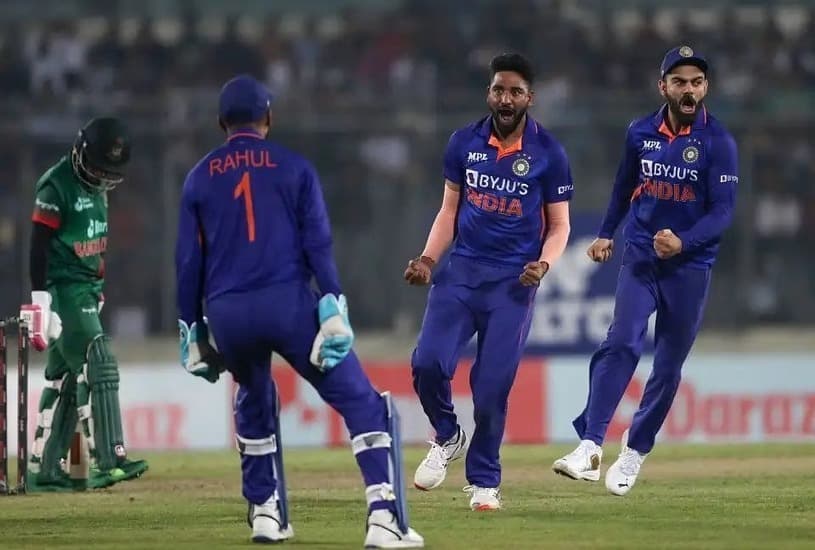Team India lost to Bangladesh on Sunday for only the third time in the past decade. The Tigers won by an unlikely one wicket to take a 1-0 lead in the three-match series and set up an intriguing match on Wednesday, December 7 at the Sher-e-Bangla National Stadium in Dhaka.
Given their recent indifferent white-ball form, India could easily consider a few personnel changes for the second ODI. Big names like Rohit Sharma, Shikhar Dhawan, and Virat Kohli have underperformed in the format over the past year or so, so the problem starts at the top.
However, assuming that none of India’s players sustain injuries, it is probably in their best interest to maintain the lineup they used in the series opener. The Men in Blue should keep the same starting lineup for the second One-Day International against Bangladesh for the following three reasons:
#3 There are no dependable backup openers in India’s squad
In the past, India’s top order has failed to deliver. Shikhar Dhawan is having the worst year of his career, whereas Rohit Sharma has only scored three runs or more in his last ten ODI innings. In contrast, Virat Kohli has a surprising string of low scores in the format.
Dhawan, on the other hand, is the player whose position on the team is in jeopardy. The 37-year-old southpaw’s style does not appear to be suitable for contemporary white-ball cricket.
He hasn’t done much recently that stands out, so switching to younger players before the World Cup would be a smart move.
However, India has no real bench replacement for Dhawan. In one-day internationals, Ishan Kishan has averaged in the early 30s, so giving Rahul Tripathi a chance at the top of the order might not be too easy.
India should keep Dhawan in the playing XI because Rajat Patidar is probably being considered as a middle-order backup.
#2 Sen, Chahar, and Thakur, India’s three pacers, need more time on the field
In the first ODI, India used four pacers. Despite Mohammed Siraj’s consistent performances, Deepak Chahar and Shardul Thakur cannot necessarily be considered integral members of the 50-over team.
The pair is one of a kind because they provide batting depth, but they both face limitations as limited-overs bowlers. Also, Chahar and Thakur bowled well in the first game of the series, Chahar giving a hard spell in the powerplay and Thakur controlling the middle overs well.
Despite Chahar’s final spell’s slight plot hole, he should remain in the team for the time being.
Kuldeep Sen took two wickets in an over but was expensive on his debut. Sen should be given at least a few games in a row to get used to playing international cricket, even though Umran Malik is on the bench. In the middle overs, India will also want a hit-the-deck enforcer, which Sen fits well.
There isn’t much reason for India to change their starting lineup for the second ODI because they won’t need to adjust their pace either.
#1 Consistency should be the main theme for India in the lead-up to the 2023 World Cup
In the lead-up to the 2023 World Cup, India ought to focus primarily on consistency. First and foremost, India ought to be mindful of maintaining consistency in selection in the lead-up to the World Cup, both with squads and playing XIs.
Over the past few years, the team’s bizarre selection policies and lack of communication with the panel have been one of the biggest criticisms.
It is evident that India cannot afford to make the haphazard changes that have become the norm, although that may change once Chetan Sharma and co. are officially relieved of their duties.
Young players need extended runs in the side, and Rohit Sharma and the team management need to do this right away in the second ODI against Bangladesh.

